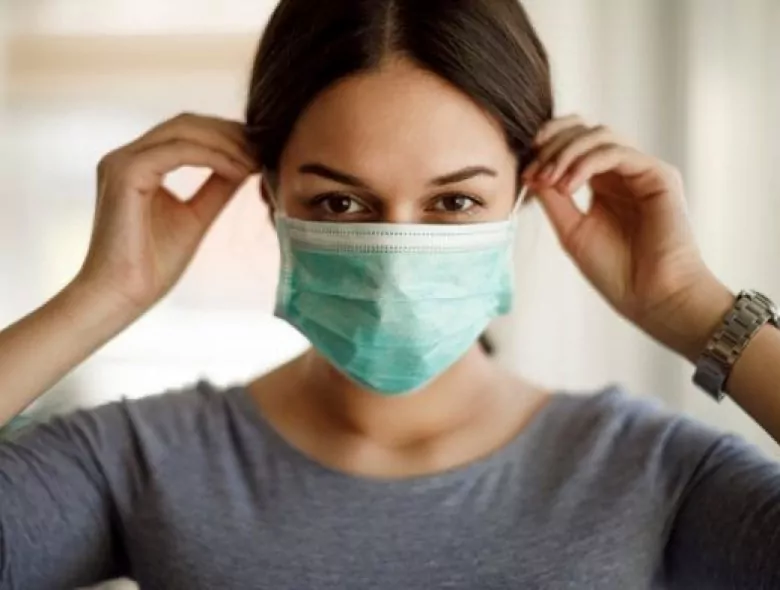Face masks have been worn in Japan and other Asian countries for a long time. They’ve typically been worn by allergy sufferers who wish to limit their exposure to pollen, people who’ve come down with a cold and are trying to avoid spreading it to others, or people who are trying to avoid getting sick. Now, the whole world is wearing masks to help slow the spread of the coronavirus. Although you’ve probably spent much of 2020 wearing a mask, you might not know a whole lot about them. Since it looks like we won’t get to stop wearing them anytime soon, it’s a good idea to learn more about masks. Keep reading, and we’ll teach you all about different types of masks and the levels of protection they offer.

Surgical Masks
Surgical masks are the most commonly worn masks in Japan. They catch droplets and aerosols coming from the wearer’s mouth and nose. Surgical masks are designed mainly for protecting other people from germs, which means everyone has to wear them to help prevent the spread of Covid-19. That being said, they aren’t completely useless when it comes to protecting the wearer. Surgical masks can’t filter out tiny airborne particles, but do filter out larger droplets. So if someone with a cold (or the coronavirus) is coughing near you, a surgical mask will provide some, but not complete protection. It might seem like a no-brainer, but make sure the mask is covering both your nose and mouth. There are a lot of people walking around with their noses sticking out of their masks! If you don’t keep your mask over both your nose and mouth, it won’t be able to protect you and the people around you. The tighter the mask fits on your face, the better protected you are. The key is to be breathing air through the mask, rather than air coming in around the sides. If the ear loops are too big and your mask fits loosely, tie them tighter. For maximum protection, tape the sides of the mask down to your face using surgical tape.
Although there was a shortage of surgical masks in early to mid-2020, they can be found almost anywhere now. Just go to your local convenience store, drugstore, or grocery store and you can buy some. As we mentioned before, the better your mask fits, the more protected you are. Try to buy a size that fits well. They’re usually available in children’s, small, regular, and large sizes.

Cloth Masks
Cloth masks provide the lowest level of protection against airborne particles. They mainly prevent the wearer from spreading liquid droplets into the air. They also cut back on the number of the wearer’s germs that are aerosolized. However, they do little to protect the wearer from viruses and bacteria. Like surgical masks, they work best when everyone is wearing one. Unlike surgical masks, cloth masks can be reused and reworn many times. They’re better for the planet (and your wallet) than disposable masks.

N95 (DS2) Masks
N95 masks (called DS2 masks in Japan) offer the highest level of protection from airborne particles. They filter out 95% of airborne particles. The high level of protection N95 masks makes them best for people who come in contact with lots of people, such as healthcare providers. N95 masks won’t protect you unless they are worn properly. They need to form a seal on your face, making it so all of the air you breathe in is filtered through the mask. This YouTube video shows you how to put on an N95 mask properly. If you have a large beard, you won’t be able to get a good seal and will need to shave it before wearing an N95 mask.
While N95 masks protect you very well, they aren’t as effective at protecting the people around you. This is because they mainly work to filter the air you breathe in, not the air you breathe out. If you want to do more to protect the people around you when wearing an N95 mask, wear a surgical mask over it.

Face Shields and other Face Coverings
In addition to wearing a mask, you can protect yourself by wearing a face shield. Face shields are most effective when used with a mask. However, there are some situations in which wearing a mask isn’t feasible. For instance, deaf people can’t read lips when the people they’re interacting with are wearing masks. Face shields are also more comfortable than masks and can be worn for a longer amount of time when it’s hot. They can also be a good alternative for people who can’t wear a mask due to a medical condition. In situations where you can’t wear a mask, a face shield will provide some protection against liquid droplets. An alternative to masks and face shields are mouth shields. These don’t do much to protect you from other people’s germs but will help protect others from yours. They won’t keep your germs from being aerosolized the way cloth and surgical masks do, but they can prevent liquid droplets from spraying into the air when you sneeze, cough, or talk.



